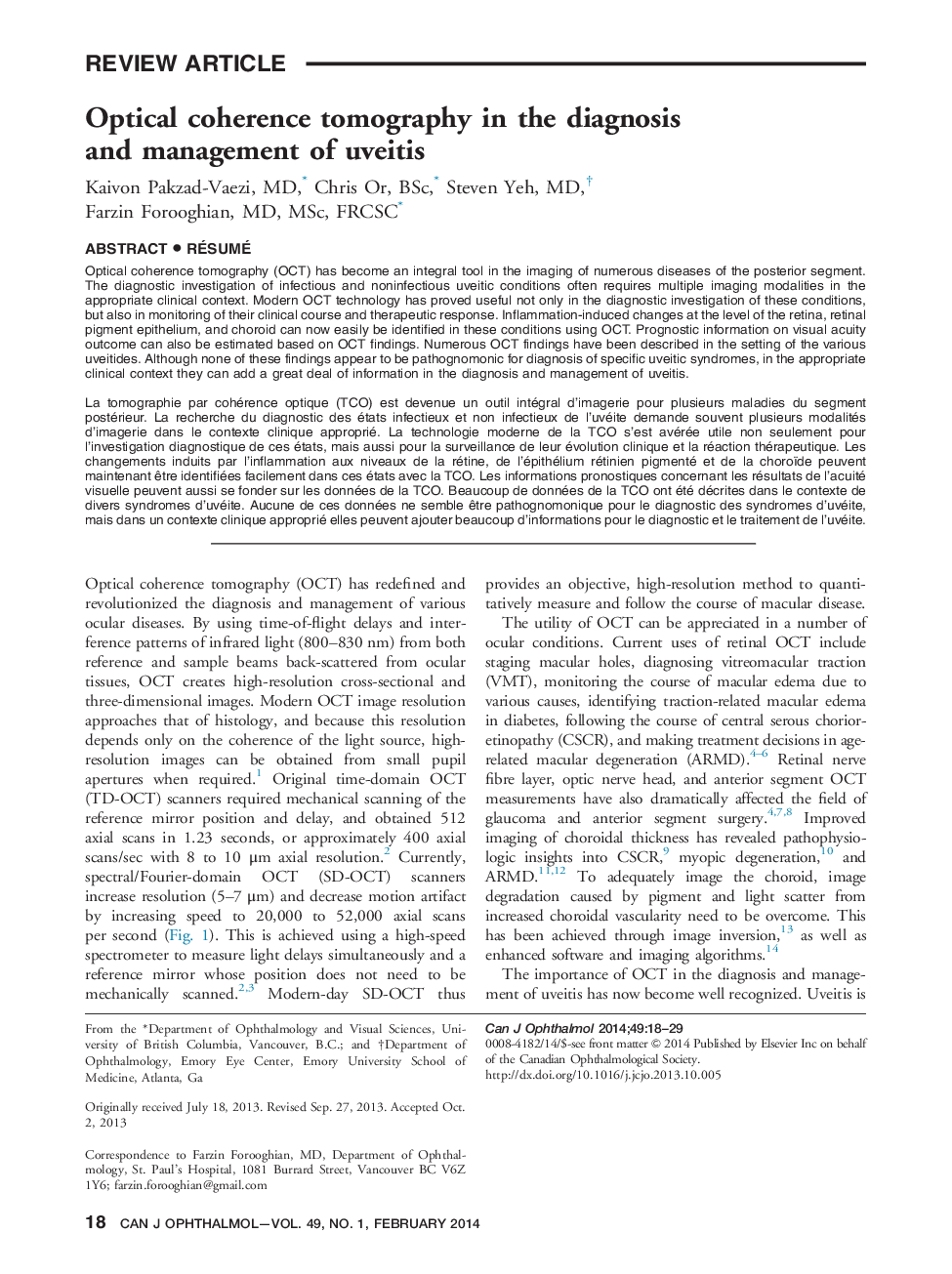| Article ID | Journal | Published Year | Pages | File Type |
|---|---|---|---|---|
| 4009142 | Canadian Journal of Ophthalmology / Journal Canadien d'Ophtalmologie | 2014 | 12 Pages |
Optical coherence tomography (OCT) has become an integral tool in the imaging of numerous diseases of the posterior segment. The diagnostic investigation of infectious and noninfectious uveitic conditions often requires multiple imaging modalities in the appropriate clinical context. Modern OCT technology has proved useful not only in the diagnostic investigation of these conditions, but also in monitoring of their clinical course and therapeutic response. Inflammation-induced changes at the level of the retina, retinal pigment epithelium, and choroid can now easily be identified in these conditions using OCT. Prognostic information on visual acuity outcome can also be estimated based on OCT findings. Numerous OCT findings have been described in the setting of the various uveitides. Although none of these findings appear to be pathognomonic for diagnosis of specific uveitic syndromes, in the appropriate clinical context they can add a great deal of information in the diagnosis and management of uveitis.
RésuméLa tomographie par cohérence optique (TCO) est devenue un outil intégral d’imagerie pour plusieurs maladies du segment postérieur. La recherche du diagnostic des états infectieux et non infectieux de l’uvéite demande souvent plusieurs modalités d’imagerie dans le contexte clinique approprié. La technologie moderne de la TCO s’est avérée utile non seulement pour l’investigation diagnostique de ces états, mais aussi pour la surveillance de leur évolution clinique et la réaction thérapeutique. Les changements induits par l’inflammation aux niveaux de la rétine, de l’épithélium rétinien pigmenté et de la choroïde peuvent maintenant être identifiées facilement dans ces états avec la TCO. Les informations pronostiques concernant les résultats de l’acuité visuelle peuvent aussi se fonder sur les données de la TCO. Beaucoup de données de la TCO ont été décrites dans le contexte de divers syndromes d’uvéite. Aucune de ces données ne semble être pathognomonique pour le diagnostic des syndromes d’uvéite, mais dans un contexte clinique approprié elles peuvent ajouter beaucoup d’informations pour le diagnostic et le traitement de l’uvéite.
